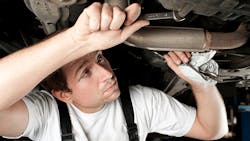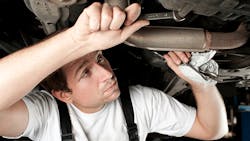Here are seven widespread myths on auto upkeep you shouldn’t blindly follow:
Myth: Engine oil should be changed every 3,000 miles. Wrong. Follow the advice in the owner’s manual and ignore the self-serving pleas from oil companies and quick-lube shops. Under normal driving conditions, most vehicles can travel 7,500 miles or more between oil changes. Changing oil more often certainly won’t harm an engine, just waste money. But if you do a lot of stop-and-go driving, trailer-towing, or traveling through mountainous or dusty areas, 3,000 miles between oil changes is a good idea.
Myth: Flush the coolant with every oil change. Most owner manuals recommend changing the coolant every five years or 60,000 miles. But check for a leak if the coolant reservoir is low despite repeatedly topping it off.
Myth: Inflate tires to the pressure shown on the tire’s sidewall. The psi figure on the side of the tire is the maximum pressure the tire will hold safely. If you’re looking for the automaker’s recommended pressure that balances braking, handling, gas mileage, and ride comfort, it’s usually on a sticker on the driver-side doorjamb, in the glove box, or on the fuel-filler door.
Myth: If regular-grade fuel is good, premium must be better. Another expensive mistake. Most vehicles run fine on regular-grade fuel (87 octane). Filling these cars with premium won’t cause damage, but it won’t improve performance, either. Higher-octane fuels are less likely to create pre-ignition problems, so they’re usually used in hotter-running, high-compression engines.
Myth: Warm up your car for several minutes before driving. Outdated advice. Driving the car is the fastest way to warm up a modern engine, and the sooner it warms up, the sooner it delivers the best mileage and performance. And don’t rev the engine during the first few miles.
Myth: Wash your car with dishwashing or laundry detergent. No, not really. Detergents strip off a car’s wax finish. Pay a little extra and stick with the car-wash liquid, which cleans without removing wax.
Myth: A battery will recharge after a jump start in only a few minutes of driving. Not even close. It can take hours of driving to give the battery a full charge, especially in the winter. Heated seats, music systems, and other accessories draw so much power that the alternator has little left to recharge the battery. You can check to see if the battery will still hold a charge by having a load test at a gas station. If it can, several hours may be needed on a battery charger to give the battery a full charge.
About the Author
Stephen Mraz Blog
Senior Editor
Steve serves as Senior Editor of Machine Design. He has 23 years of service and has a B.S. Biomedical Engineering from CWRU. Steve was a E-2C Hawkeye Naval Flight Officer in the U.S. Navy. He is currently responsible for areas such as aerospace, defense, and medical.

